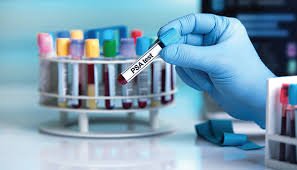Prostate-specific antigen (PSA) screening plays a pivotal role in early prostate cancer detection, giving men a better chance at timely treatment and improved outcomes. From a medical billing perspective, selecting the correct ICD-10 codes for PSA screening is essential. These codes support accurate documentation, guide clinical decisions, and ensure proper reimbursement. Mastering them helps reduce billing errors and enhances care delivery.
What Is PSA Screening?
PSA screening is a blood test that measures levels of prostate-specific antigen—a protein produced by prostate cells. Elevated PSA levels may indicate prostate cancer, but they can also signal benign conditions like benign prostatic hyperplasia (BPH) or prostatitis.
Men over 50, or younger if they have risk factors such as a family history or African American heritage, often discuss PSA screening with their healthcare providers. While the test can detect cancer before symptoms arise, it’s not foolproof. False positives and detection of slow-growing cancers that may never cause harm are important considerations.
Ultimately, PSA screening offers a proactive approach to identifying prostate issues early—while balancing the risks of overdiagnosis.
ICD-10 Codes for PSA Screening: What You Need to Know
Accurate coding is critical for PSA-related encounters. Here are the most relevant ICD-10 codes:
| Code | Description |
| Z12.5 | Encounter for screening for malignant neoplasm of prostate. Used for routine PSA screening with no symptoms or prior diagnosis. |
| R97.2 | Elevated PSA result without confirmed cancer. Indicates abnormal lab findings that require further evaluation. |
| R97.20 / R97.21 | Rising PSA levels post-treatment. Used to monitor recurrence after prostate cancer therapy (e.g., surgery or radiation). |
Coding Guidelines: Screening vs. Diagnostic Testing
- Routine Screening: Use Z12.5 when the patient has no symptoms and is undergoing preventive testing.
- Symptom-Driven Testing: If PSA testing follows urinary symptoms or an abnormal digital rectal exam, pair PSA results with relevant symptom or diagnostic codes.
🔗 Link Diagnoses with Procedures
Ensure ICD-10 codes align with procedure codes (e.g., prostate biopsy, ultrasound) and lab documentation. This consistency improves claim approval rates and clinical transparency.
Common Coding Challenges
- Medicare Coverage: Medicare reimburses PSA screening for eligible age groups and risk categories but has strict frequency guidelines. Using Z12.5 correctly helps avoid denials.
- Documentation Errors: Avoid coding for symptoms when none exist, and ensure elevated PSA results are backed by clinical notes. Precision in documentation supports compliance and reduces claim rejections.
Final Thoughts
PSA screening remains a cornerstone of prostate cancer prevention. Proper use of ICD-10 codes—especially Z12.5 and R97.2—ensures accurate billing and supports high-quality care. Coders and clinicians who follow best practices help streamline reimbursement and improve patient outcomes.
For expert guidance on clinical documentation, coding strategy, or health content development, reach out to Dr. Diana Rangaves—clinical consultant and health communications specialist.









